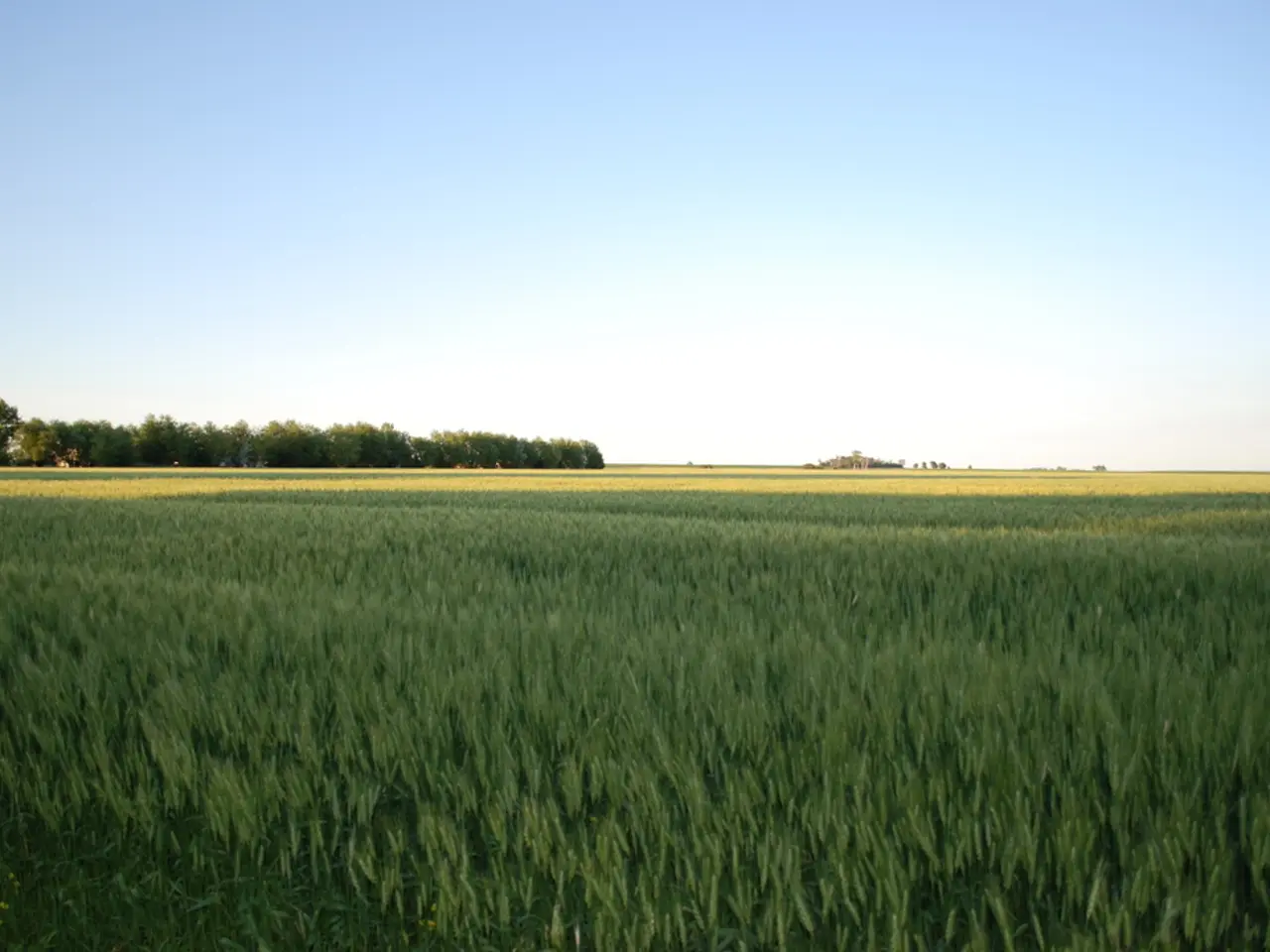Remarkable Persistence in Biostimulants despite a Staggering 86% Decrease in Budget Allocation
Growing Demand for Crop Biostimulants
The crop biostimulant market is experiencing rapid growth, with over 350 companies active in diverse active ingredient categories as of mid-2025. The market is projected to reach a staggering $19.6 billion by 2027, with biostimulants accounting for approximately $7.6 billion[1].
This expanding market is driven by the increasing demand for sustainable, bio-based agricultural inputs and the rising abiotic stresses on crops. Biostimulants, which activate processes already present in the plant to improve nutrient uptake, stress tolerance, and yield, are seen as potential alternatives to traditional chemicals, due to tightening regulations and concerns about environmental degradation and human health[1].
Key Players and Funding Trends
Notable companies in this market include major agricultural and biotech firms like Bayer AG, Syngenta, and Novozymes. Despite supply chain disruptions during the COVID-19 pandemic, these companies are investing in maintaining operations and product development[5]. The market landscape is diverse, with many startups and specialized firms innovating in biostimulant ingredients[1].
However, recent funding trends highlight a contraction in the market. Biostimulant funding dropped by 86% in 2025 compared to earlier years, possibly reflecting market saturation or investor caution despite continued strong interest[1]. This suggests the market is consolidating, and companies may now focus more on commercialization and regulatory progress rather than early-stage funding.
Regulatory Developments
Regulatory developments are progressing to support biostimulant commercialization. Initiatives like the reintroduction of the Plant Biostimulant Act in the U.S. (March 2023) aim to create a uniform federal approval process and support research on the benefits of biostimulants for soil health[5]. Tightening regulations on traditional chemical pesticides and fertilizers are also driving interest in biostimulants as alternatives that boost crop resilience and sustainability without genetic modification[1][3].
Market Challenges and Opportunities
Product differentiation in the biostimulant market is challenging due to a limited set of ingredients and formulations that combine various ingredients. Chris Taylor, a partner at The Mixing Bowl, stated that interest in biostimulants has been "extraordinary" but the space is "a challenging one to navigate"[5]. Taylor believes it's hard to differentiate between many biostimulant products due to their multi-functional nature and combination of ingredients.
Despite these challenges, there are opportunities for innovation. For instance, synthetic plant growth regulators like cytokinins, a biostimulant category, are growing steadily with applications in high-value horticulture, turf, and broadacre crops[2]. Taylor anticipates continued investment, partnership, and M&A activity in the biostimulant market.
In summary, the crop biostimulant market is mature but expanding, characterized by a crowded competitive field, major industry player involvement, recent funding tightening, and advancing regulatory frameworks aimed at enabling sustainable and efficient crop production. Biostimulant manufacturers need to consider specific crops, practices, locations, and risk tolerance when producing products.
[1] The Mixing Bowl (2025). Market Map: Biostimulants [2] Grand View Research (2023). Cytokinin Market Size, Share & Trends Analysis Report By Application, By Region And Segment Forecasts, 2025 - 2030 [3] AgroFresh Solutions (2023). The Plant Biostimulant Market: Growth, Trends, and Forecast (2023 - 2032) [4] The Mixing Bowl (2023). Biostimulants: The Challenges and Opportunities [5] AgroFresh Solutions (2023). The Plant Biostimulant Market: Growth, Trends, and Forecast (2023 - 2032)
- The growth in the crop biostimulant market has led to a significant interest in science, as researchers work to develop new, sustainable agricultural inputs.
- In the health-and-wellness sphere, biostimulants are being considered as potential alternatives to traditional chemicals due to concerns about environmental degradation and human health.
- Fitness-and-exercise enthusiasts and nutrition experts may find value in biostimulants, as they improve nutrient uptake and stress tolerance, thereby enhancing crop yield.
- The finance market is closely watching the biostimulant market, with recent funding trends indicating a contraction despite continued strong interest.
- Investors in the technology sector should take note of the potential for innovation in biostimulants, particularly in the development of synthetic plant growth regulators.
- Keeping up with general-news related to biostimulants can provide insights into regulatory developments, market challenges, and opportunities in the realm of education-and-self-development, sports, and entertainment.




